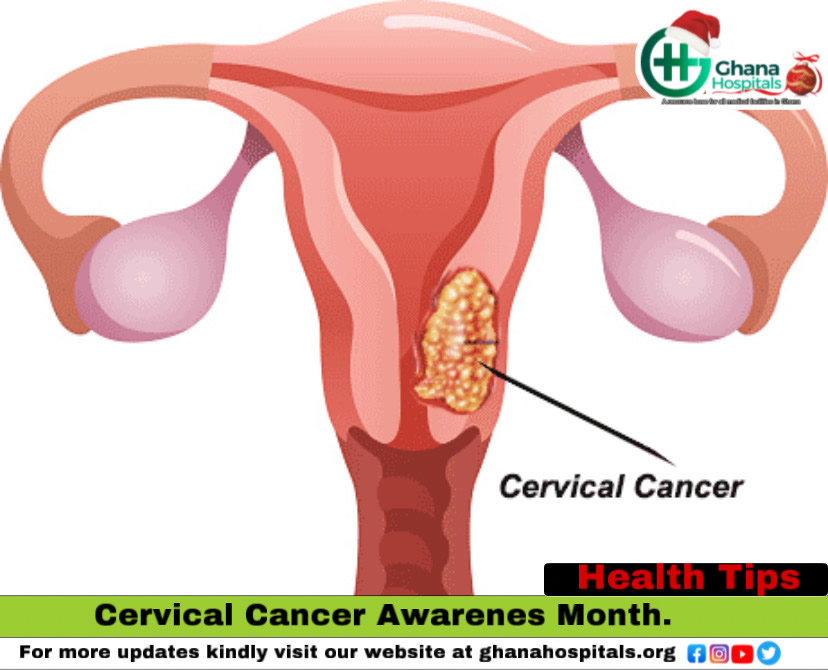 January is Cervical cancer awareness month. Cervical cancer affects the entrance to the womb. The cervix is the narrow part of the lower uterus, often referred to as the neck of the womb.
January is Cervical cancer awareness month. Cervical cancer affects the entrance to the womb. The cervix is the narrow part of the lower uterus, often referred to as the neck of the womb.
In the early stages of cervical cancer, a person may experience no symptoms at all.
As a result, women should have regular cervical smear tests, or Pap tests.
A Pap test is preventive. It aims not to detect cancer but to reveal any cell changes that indicate the possible development of cancer so that a person can take early action to treat it.
The most common symptoms of cervical cancer are:
- bleeding between periods
- bleeding after sexual intercourse
- bleeding in post-menopausal women
- discomfort during sexual intercourse
- vaginal discharge with a strong odor
- vaginal discharge tinged with blood
- pelvic pain
These symptoms can have other causes, including infection. Anyone who experiences any of these symptoms should see a doctor.
Stages
Working out the stage of a cancer is important, as it helps a person decide the most effective type of treatment.
Staging aims to assess how far the cancer has spread and whether it has reached nearby structures or more distant organs.
A 4-stage systemTrusted Source is the most common way to stage cervical cancer.
Stage 0: Precancerous cells are present.
Stage 1: Cancer cells have grown from the surface into deeper tissues of the cervix, and possibly into the uterus and to nearby lymph nodes
Stage 2: The cancer has now moved beyond the cervix and uterus, but not as far as the walls of the pelvis or the lower part of the vagina. It may or may not affect nearby lymph nodes.
Stage 3: Cancer cells are present in the lower part of the vagina or the walls of the pelvis, and it may be blocking the ureters, the tubes that carry urine from the bladder. It may or may not affect nearby lymph nodes.
Stage 4: The cancer affects the bladder or rectum and is growing out of the pelvis. It may or may not affect the lymph nodes. Later in stage 4, it will spread to distant organs, including the liver, bones, lungs, and lymph nodes.
Undergoing screening and seeking medical attention if any symptoms occur can help a person access early treatment and increase the chances of survival.
Causes
Cancer is the result of the uncontrolled division and growth of abnormal cells. Most of the cells in our body have a set lifespan, and, when they die, the body generates new cells to replace them.
Abnormal cells can have two problems:
they do not die
they continue dividing
This results in an excessive buildup of cells, which eventually forms a lump, or tumor. Scientists are not completely sure why cells become cancerous.
However, some risk factors might increase the risk of developing cervical cancer. These include:
HPV: This is a sexually transmitted virus. More than 100 different types of HPV can occur, at least 13 of which may cause cervical cancer.
Having many sexual partners or becoming sexually active early: The transmission of cancer-causing HPV types nearly always occur as a result of sexual contact with an individual who has HPV. Women who have had many sexual partners generally have a higher risk of HPV infection. This increases their risk of developing cervical cancer.
Smoking: This increases the risk of cervical cancer, as well as other types.
A weakened immune system: The risk of cervical cancer is higher in those with HIV or AIDS, and people who have undergone a transplant, leading to the use of immunosuppressive medications.
Birth control pills: Long-term use of some common contraceptive pills slightly raises a womans risk.
Other sexually transmitted diseases (STD): Chlamydia, gonorrhea, and syphilis increase the risk of developing cervical cancer.
Socio-economic status: Rates appear to be higher in areas where income are low.
Treatment
Cervical cancer treatment options include surgery, radiotherapy, chemotherapy, or combinations of these.
Deciding on the kind of treatment depends on several factors, such as the stage of the cancer, as well as age and overall state of health.
Treatment for early-stage cervical cancer, when the cancer remains within the cervix, has a good success rate. The further a cancer spreads from its original area, the lower the success rate tends to be.
Early-stage options
Surgery is a common treatment method when the cancer has not spread from the cervix. Radiation therapy may help after surgery if a doctor believes that cancer cells might be present inside the body.
Radiation therapy may also reduce the risk of recurrence (cancer coming back). If the surgeon wants to shrink the tumor to make it easier to operate, the person may receive chemotherapy although this is not a very common approach.